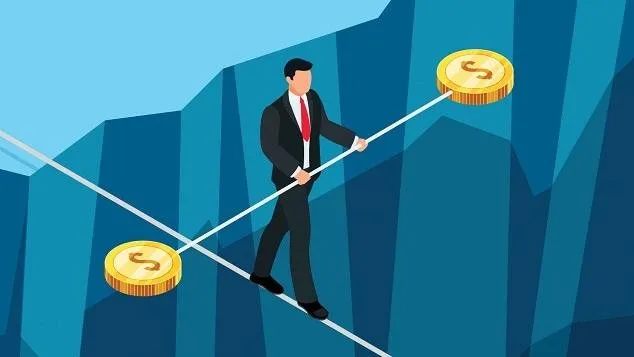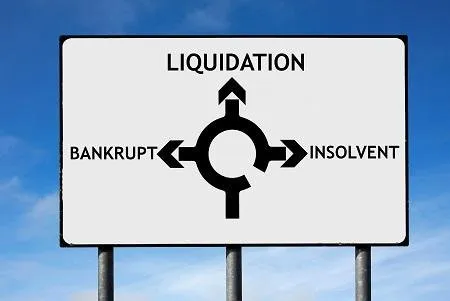
I've been thinking about this idea for a while. I try to discuss it with other people; people who know about crypto, but they always tell me it doesn't make sense. Maybe I'm just talking crazy.
Looking through my old posts:
https://steemit.com/stable-coins/@edicted/stable-coins-continued
The corporations aggressively entering the cryptosphere are going to destabilize the banking sector before we even have the chance.
LOL, nice. Sound like anything you've heard about?
*COUGH* Libra *COUGH*COUGH*
https://steemit.com/volatility/@edicted/a-self-regulating-stable-coin
Crux
Because crypto is potentially superior to fiat in every way, we should be able to make a coin that is both stable and gains value over time. How are current stable-coins attaining their so-called stability?
Collateral
Stable-coins piggy back off of USD or another fiat currency to maintain liquidity at the optimal buying/selling points. Essentially, if USD becomes unstable then every stable-coin in existence will also become unstable, making them all effectively worthless. Even stable-coins pegged to other fiat currencies would be destabilized because USD is connected to everything.
Ideally, the solution is to create a stable asset that's pegged to it's own rules of inflation. Doing this in a decentralized manner is no easy task. I personally wouldn't even know where to begin.
No one hoards USD because the FED can just print more money and devalue the hoarder's stake. If you decentralized USD how would you stop people from hoarding it? You'd have to print money in such a way that guaranteed it being added to liquid circulation rather than being stored. Then, when someone dumped their stash on the market you'd have to find a way to remove those coins from circulation to avoid a flash crash.
Essentially, it all comes down to being able to measure trust, just like with every other cryptocurrency. If you can find trustworthy community members to regulate the currency it will work as intended. The reason why Bitcoin worked out so well is that this trust is allocated through expending valuable energy. Whoever spends the most energy can be trusted with the most inflation. Because Bitcoin isn't trying to be stable it doesn't have to deal with that problem. Besides, one Bitcoin is always worth one Bitcoin, as we seen on CoinMarketCap every day. :D
Thought Experiment.
So, I still want to create a stable-coin that gains value over time. Let's take the shortcut and just peg it to USD + interest. On day one, a single coin is targeted at one USD. However, every month that goes by the target increases 1% (not compounded). That way anyone who leaves money in the stable coin is essentially gaining 12% interest a year. Such a coin would surely put all other stable coins to shame and absorb the majority of the stable-coin market cap. But how would such a thing be possible?
Revenue Streams
If I have a billion dollars in a bank to collateralize a billion stable coins, how am I going to keep up with an interest rate of 12% APR? Without a revenue stream that increases my collateral I will eventually become insolvent and the stable-coin will die a swift death.

Insolvency.
When does this happen? It happens when no one wants to hold the bag on your coin anymore. It happens when the value of the stable-coin drops below the peg. When this happens, the moderator of the stable-coin is forced to bite the bullet and buy back their own coins from the market in order to raise liquidity and stabilize the price back at the target.
Conversely, when the value of the stable asset is too high, this is a much easier problem to deal with. All you have to do is print more money out of thin air and sell it on the market.
Stable-Coin Liquidity Window
It is this push and pull that provides the stable-coin operator the chance to make money and increase the collateral of the project. Imagine you set a +/- 5% window on the variance of the acceptable peg. This means the coin in question would be able to fluctuate between $1.05 and $0.95 under the acceptable limits.
Now, obviously this spread is a lot higher than pretty much all the stable coins out there (except SBD lol). However, how many of the other stable-coins are offering 12% interest? None of them; making this asset totally unique and theoretically giving it very high demand.
So, when the price of the asset is low ($0.95) you buy it back with your collateral, and when the price of the asset is high ($1.05) you create coins and take the profit. The more income you need for collateral the more you can widen the window and make the asset less stable. If you have plenty of collateral to peg the asset then you can narrow the window, making it more stable and theoretically giving it even more demand to use.
Other revenue streams
This is just one example of how to generate income with such a project. What if you created a first-person shooter connected to this asset and the only way to purchase ammo was with the stable coin. Say each bullet costs 0.001 coins. Now there exists a permanent drain on the supply of the coin, constantly pushing the value up and allowing you to print coins out of thin and air make a profit, all the while enticing the entire world to use your stable-coin over all others because it's offering 12% interest.
Given this example, it's easy to see that the options to incorporate additional revenue streams are endless.
What's it backed by?
Like Libra, the smartest thing to do is to back said stable asset with a wide range of other stable assets. However, I also think that it should be backed by stores of value as well. The funny thing about Bitcoin volatility is that when it crashes the demand for stable-coins goes up. Therefore, when everyone else is losing money you're the one making money if you run a stable-coin like this.
The only problem is when you receive the crashing Bitcoin you pretty much have to get rid of it or you'll be the one taking all the losses. This is why only big exchanges can operate a big stable-coin (unless you do decentralized collateral like the MakerDAO) because they have other liquid markets they can dump the volatility to. (namely: Bitcoin/USD)
Conclusion
There is a lot of greed out there in the cryptosphere, and that greed offers a lot of opportunity for others to come in and offer a better service at a fair price. Seeing as how superior crypto is to fiat it only makes sense that a stable asset will eventually be developed that gains value over time rather than losing it.